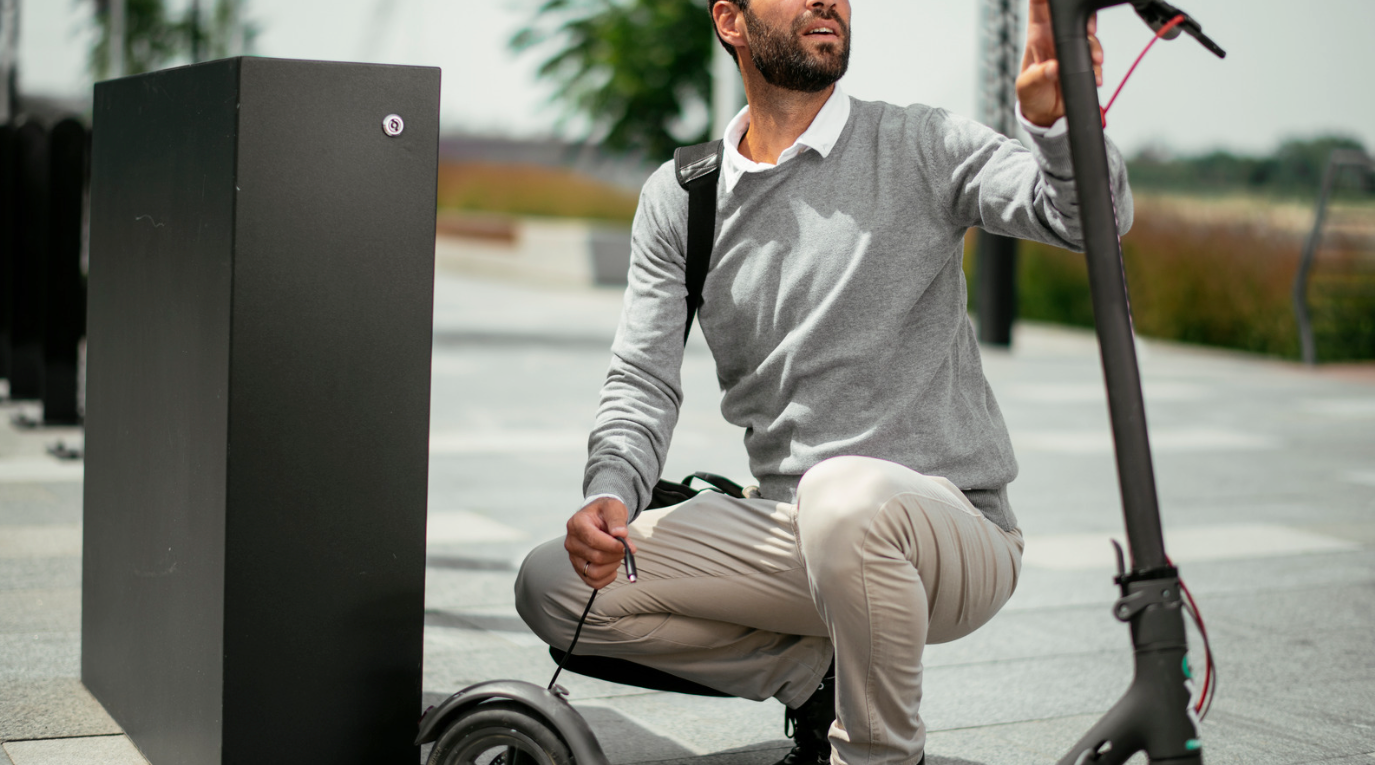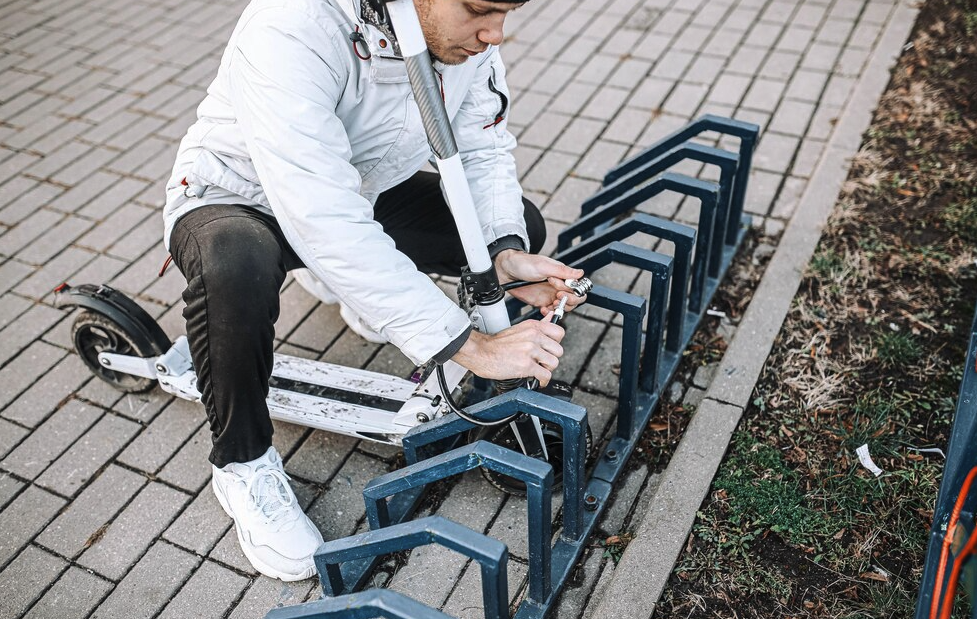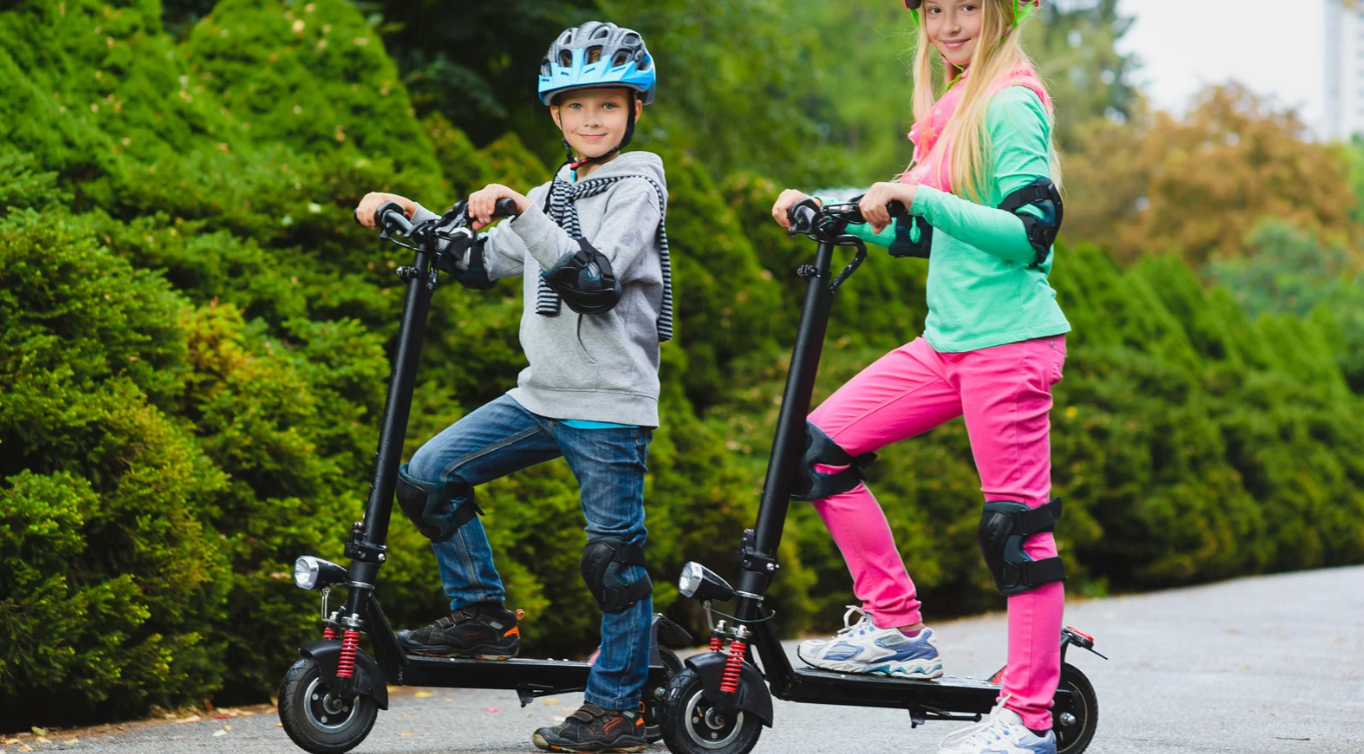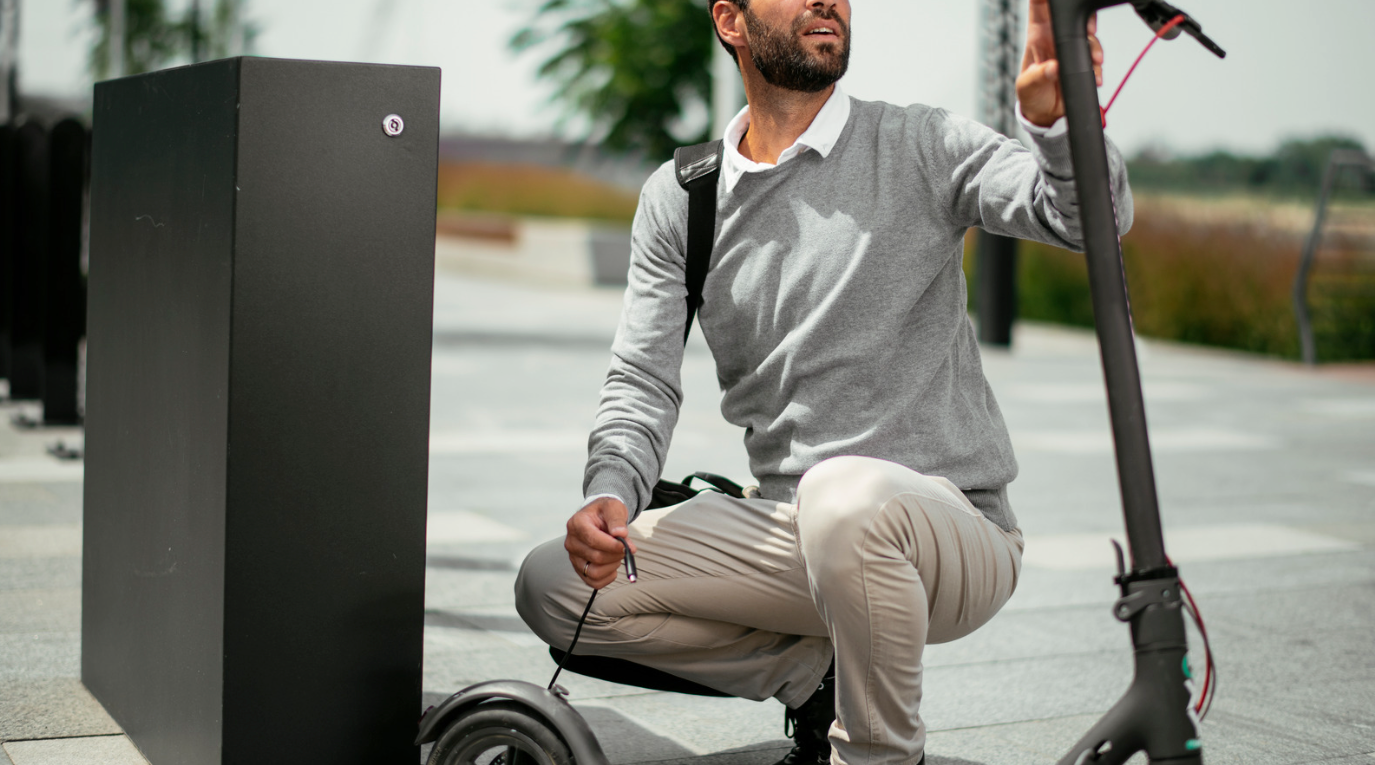How long does it take to charge an electric scooter? This is a common question for both new and experienced riders.
The time required varies widely from 4 to 20 hours, depending on the type of scooter and charger used.
You might wonder what influences this charging time, and that's exactly what we'll dive into.
This article will help you understand average charging times and the factors that affect them and offer tips for a more efficient and safe charging routine.
Whether you're curious or looking for practical advice, there's something here for everyone interested in electric scooters.
What Is the Average Charging Time for E-scooters?
Charging times for e-scooters can vary widely, from a quick charge to a more extended period.
-
General Range: Most e-scooters charge fully for 3 to 8 hours. This provides a broad estimate that is useful for planning.
- Factors Affecting Charge Time: The variation in time mainly depends on the battery size and charger power.
Battery size impacts how long a scooter needs to charge. Larger batteries typically take more time.
Charger power also plays a role. Higher-powered chargers can reduce charging time significantly.
Some high-end models charge faster, while others may require more time, up to 10 hours or more.
Knowing the average charging time helps you plan your rides and ensure your e-scooter is ready when you need it.
Remember these averages, and you'll manage your e-scooter's charging needs efficiently.
Factors Influencing How Long It Takes to Charge an Electric Scooter
Charging times for electric scooters vary due to several factors. The capacity of the battery, the output power of the charger, and the starting charge level all play crucial roles.
The battery's health and the surrounding temperature can also impact the overall charging process.
1. Battery Capacity (The Fuel Tank Size - Ah/Wh)
Larger batteries, measured in Amp-hours (Ah) or Watt-hours (Wh), naturally take longer to charge. Think of it like filling a larger fuel tank; more energy is required.
For example, a small kids' scooter with a lower battery capacity may take just a few hours to charge. In contrast, a long-range commuter scooter, designed for extended travel, could take up to 8 hours or more.
Battery capacity directly affects how much power needs to be replenished. When considering a scooter, it’s important to understand how the size of the battery will influence your charging times and to plan accordingly for longer charging sessions if you have a larger battery.
2. Charger Output Power (The Pump Speed - Amps)
Chargers vary significantly in their output power, measured in Amperes (Amps). A higher amperage means faster charging, much like how a faster pump fills a tank quickly.
Standard chargers usually have a lower output than fast chargers, which can significantly reduce charging time.
For instance, a standard charger might take 6 hours, while a fast charger could do it in half the time.
It’s important to check the fast charger's compatibility with your scooter to avoid potential damage. Different models might offer the option for faster chargers, providing flexibility in how quickly you can get back on the road.
3. Starting Battery Level (How Empty is the Tank?)
Charging rates aren't constant throughout. Charging the battery from 50% is often quicker than from a completely dead state.
This is because the final 10-20% of a charge cycle typically takes longer to complete. If your scooter is at 0%, it will require significantly more time to reach full capacity than starting at a mid-charge.
Knowing this can help you plan charging times more effectively, optimizing charging based on how much power you need.
4. Battery Health and Age (Wear and Tear)
The age and condition of a battery can also influence its charging efficiency. As batteries age or degrade, they might hold less charge and could potentially charge at a slower rate.
This wear can reduce their overall capacity and cause inconsistencies in how they receive a charge.
Regular maintenance and monitoring can help mitigate these issues, ensuring your scooter charges as efficiently as possible despite the battery's age.
5. Ambient Temperature (Goldilocks Zone for Charging)
The environment around your scooter also plays a role in charging times. Extreme temperatures, both hot and cold, can slow down the charging process as the Battery Management System (BMS) works to protect the battery.
Ideally, you should aim for a moderate "Goldilocks" temperature range when charging.
Keep your scooter in a sheltered or temperature-controlled area during charging to maintain optimal charging conditions and prevent delays.
How Long Does It Take to Charge an Electric Scooter (By Type)
Charging times for electric scooters vary based on the scooter type and battery capacity. Here are some general guidelines to help you determine how long it might take to charge different types of electric scooters:
-
Lightweight/Entry-Level Scooter (e.g., <10Ah battery): These scooters typically take about 3-5 hours to charge fully. They are ideal for short commutes and quick trips around town.
-
Mid-Range Commuter Scooter (e.g., 10-15Ah battery): Scooters in this category usually take 5-7 hours to charge. They are suited for daily use and moderate distances.
- Long-Range/High-Performance Scooter (e.g., 15Ah+ battery): These models can charge in 6 to 10 hours. They are perfect for longer travel distances and higher speeds.
Each charging time assumes the use of standard chargers provided by the manufacturer. If available, faster charging options might reduce these times slightly.
Always refer to your scooter's manual for the most accurate information.
How To Calculate Estimated Charging Time
To estimate how long it will take to charge your electric scooter, you can use a simple formula:
Time (hours) ≈ Battery Capacity (Ah) / Charger Output Current (A).
Let’s break it down.
-
Battery Capacity (Ah): Check your scooter's battery specifications for its capacity, usually measured in Ampere-hours (Ah).
- Charger Output Current (A): Find the charger's output current, commonly measured in Amperes (A).
Here's a quick example:
Imagine your scooter has a 10Ah battery and you use a 2A charger.
- Estimated Time: 10Ah / 2A ≈ 5 hours.
This calculation can help you plan when to charge your scooter.
Caveats:
- Keep in mind that this formula is an approximation.
- Charging efficiency isn't 100%, so some energy is lost.
- Charging often slows down as the battery nears full capacity, affecting the time needed.
📌 Also Read: How Fast Do Electric Scooters Go? Speed Ranges and Limits
Fast Charging vs. Battery Health: Is Quicker Always Better?
Fast charging can be a tempting option for electric scooters. Some models fully charge in about one to three hours, saving time. However, there are concerns that faster charging might reduce battery life.
Heat Generation: Heat is a key factor in fast charging. Charging quickly often produces more heat, which can potentially harm the battery over time and lead to capacity loss.
Battery Management System (BMS): Most scooters have a BMS that helps control the charging speed and manage heat production. This system protects the battery from damage when using fast charging.
Manufacturer Recommendations: Always check and follow the manufacturer's guidelines. They provide specific charger advice and the suitable charging speed for your scooter's battery.
Key Points to Consider:
- Fast charging can save time but may increase heat.
- More heat can potentially shorten battery life.
- Scooters have a BMS to help manage these effects.
- Stick to manufacturer instructions for best results.
Deciding whether to use fast charging should weigh convenience against long-term battery health.
Tips on How to Charge Your Electric Scooter Safely
Charging your electric scooter safely involves selecting the right equipment, choosing a suitable location, and monitoring the process closely.
Considerations like handling damaged batteries also play a crucial role.
1. Always Use the Correct Charger & Inspect It First
Using the correct charger is crucial for safety. Stick to the one supplied by the manufacturer or an approved replacement. Chargers with mismatched voltage or amperage can lead to overheating, battery damage, or fire risks.
Before every use, inspect the charger and cables for damage, such as fraying, cracks, or bent pins. If you find issues, discard the charger immediately. For added assurance, verify that the charger has safety certifications such as UL or CE.
2. Pick a Safe Charging Spot (Location Matters!)
Choose a safe spot indoors for charging. Aim for a dry, cool, and well-ventilated area. Keep the scooter away from direct sunlight or moisture, and use a hard, flat surface like tile or concrete. Never charge on carpets, beds, or near flammable items like curtains or paper.
Ensure there’s enough space around the scooter for air to circulate. Avoid charging in extreme temperatures; both hot and cold can be problematic.
3. Keep an Eye (and Hand) on Things During Charging
Regularly check the charger or battery pack for excessive heat while charging. Warm is common, but unplug it immediately if it's too hot to touch. Don’t cover the scooter or charger, as this can trap heat.
Though modern systems have protections, avoid leaving scooters charging completely unattended for long periods, especially overnight. To ensure safety, make sure the charging setup doesn’t block escape routes like doorways or hallways.
4. Follow Safe Plugging & Unplugging Procedures
When plugging in, connect the charger to the wall outlet before the scooter's charging port. Reverse this process when unplugging. Unplug both connections once charging is complete or nearly so instead of leaving them indefinitely.
This can prevent overheating and other safety hazards.
5. Never Charge a Damaged Battery
Never try to charge a battery that shows signs of damage, such as swelling, leakage, or corrosion.
If the scooter has experienced a significant crash or has been submerged in water, the battery should undergo a professional inspection before another charge.
Charging a damaged battery can lead to severe safety issues, so taking precautions is critical.
📌 Also Read: How To Charge an Electric Scooter: Complete Guide for Beginners
Why Is My Scooter Charging So Slowly? (Troubleshooting)
If your scooter takes longer to charge than usual, start by checking several key areas.
-
Connections: Ensure the power outlet is working and your charger is properly connected to the wall and the scooter.
-
Correct Charger: Verify that you're using the correct charger for your scooter. The charger’s voltage and amperage must match your scooter’s specifications. Check your user manual for details.
-
Faulty Charger: If possible, test your charger with another compatible scooter. A defective charger could be the reason for slow charging.
-
Battery Issue: If your scooter still charges slowly with a new charger, the battery might be the problem. Lithium-ion batteries can degrade over time, causing slower charging. Consider inspecting the battery or consulting a professional.
- Temperature Impact: Extremely hot or cold temperatures can affect charging speed. Try charging the scooter in a moderate environment to see if it speeds up the process. Avoid charging in direct sunlight or freezing conditions.
By methodically checking each area, you'll have a better chance of identifying and resolving the slow charging issue.
Electric Scooter You May Also Like 👍
|
|
|
|
|
📌 Check Out CIRCOOTER Scooter Charger
Frequently Asked Questions
Electric scooters have variable charging needs. The type of charger used, frequency of charging, and battery care all impact charging times and battery lifespan.
Can I Use a Different or Faster Charger With My Scooter?
It’s best to use the charger that came with your electric scooter. Using a different or faster charger can damage the battery or shorten its life. Some scooters allow fast charging, but only with approved accessories. Always check your scooter’s manual before switching chargers.
What is the Range of an Electric Scooter on a Full Charge?
The range of an electric scooter on a full charge varies by model, but most can go between 15 to 40 miles. High-end models may reach up to 60 miles. Factors like rider weight, speed, terrain, and battery size affect the total range. Always check the specs before you ride.
Should I Charge My Electric Scooter After Every Use?
Yes, it’s a good habit to charge your electric scooter after each use, especially if the battery drops below 50%. Regular charging helps keep the battery healthy and ready for your next ride. Just avoid overcharging—unplug it once it's full. If you don’t use it daily, charge it every few weeks.
How Can I Charge My Electric Scooter at Home?
To charge your electric scooter at home, plug the charger into a standard wall outlet, then connect it to the charging port on your scooter. Make sure the charger’s light turns red or green to show it’s working. Place the scooter on a flat, dry surface while charging. Once it’s fully charged, unplug it to avoid overcharging.
How Far Will an Electric Scooter Go on a Full Charge?
Most electric scooters go 15 to 40 miles on a full charge, depending on the model and battery size. Some long-range scooters can go even farther, up to 60 miles. Riding speed, hills, and rider weight also affect distance. Check your scooter’s specs to know the exact range.
How Do I Keep My Electric Scooter Battery Healthy?
To keep your electric scooter battery healthy, charge it regularly, but avoid letting it drop to 0%. Store the scooter in a cool, dry place and don’t expose it to extreme heat or cold. Avoid overcharging—unplug it once the battery is full. Following these steps can help your battery last longer.
Read Related Articles 📖








Leave a comment
All comments are moderated before being published.
This site is protected by hCaptcha and the hCaptcha Privacy Policy and Terms of Service apply.